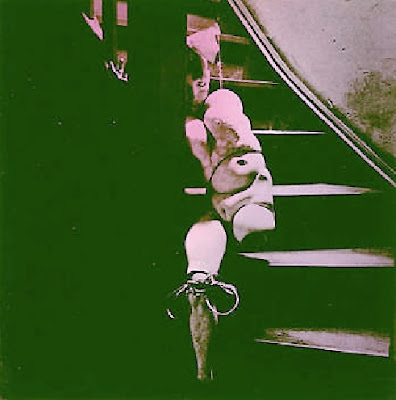Much of the time we are fascinated by what is unable to be had. Particularly though, the most interesting results can come from obsession. Whether beautiful or morbid, a common theme seems to remain within the world of secret curiosities; those considerably taboo areas...
"Hans Bellmer, whose photographs of his own creepy motile doll-sculptures consciously recall several centuries of carnal mechanics and stalled desire, seems to have understood the ultimate sterility of the whole project."
(Brian Dillon)
(Brian Dillon)
Inspired first by the work of Oskar Kokoschka, Bellmer's first doll projects culminated after three legendary experiences: An attendance to Jacques Offenbach's Tales of Hoffmann (in which a man falls tragically in love with his lifelike doll Olympia), through an erotic obsession with his young and beautiful cousin Ursula, and in receiving a bundle of sentimental childhood toys from his mother.
Bellmer gained from these events a compulsion, in his words, "to construct an artificial girl with anatomical possibilities...capable of re-creating the heights of passion even to inventing new desires."
Milles Filles (A Thousand Girls) 1939
His expressions of obsession and desire through unattainable 'young maidens' in the 1930's are not so different from today's one track Real Doll industry. Throughout the similarities in subject matter, undeniably there is an Art to what Bellmer has done in his blatant use of Freudian concepts to exploit his own desires and self-consciousnesses, satisfying visually that artist's thirst to share, create, and expose our fixations available for the public's endless interpretations..
Unica Bound, 1959
Plate 12 of Les Jeux de la Popee (The Games of the Dolls) 1949
"Bellmer's photographs of the ball-jointed doll establish sinister, narrative tableaus, with new emphasis on the doll's environment: outside the studio, the doll becomes a dramatic character, often the victim of an unseen tormentor, in domestic interiors, basement, hayloft, or forest."
She "only had life in so far as one projected it into her... [she] understood she was reserved for despair."
"The power of these photographs often resides in the coexistence and confusion of the perverse and the banal".... for what where would we be in our minds be if the 'confusion' portrayed about the deviance in 'normal' sexuality was actually plainly expressed....
Read more into the psychological references in his work HERE.
Below: La Poupee (The Doll), Maquette for 'Les Jeux de La Poupee. 1938






Bellmer's work has also been seen as a rebellion against his father and the Nazi regime that his father supported. This is an interesting article concerning this. http://vcg.emitto.net/6vol/Chandler.pdf
ReplyDelete